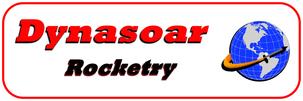
Radio Controlled Rocket Glider Kits
Plans:
Hover over the "Plans" tab above to see a pulldown of plans available.
I use a slightly tail heavy launch condition and slightly nose heavy glide and it works without having to shift balast. I prefer a launch rail with guide buttons as there is no flex, if you use a launch rod, you would need a minimum 6' 1/4" rod to give proper liftoff speed.
Reminder that these templates were scanned full size, but printers normally cannot print to the edges, and they will shrink the image and put some border around it, this will yield a smaller than original print and may cause mis-alignment, make sure you turn off page scaling in the printer before printing, and that there is no scaling or auto-expand or fill to the sheets and that you print without borders.
When cutting slots and tabs, it is better to cut one side, then overlay it on the otherside and mark the tabs and slots, that way you are sure they line up perfectly. The plans are tracings of my parts but fitting may be required.
Build light, I've included carbon where it is needed for flight loads. I use velcro to hold the RX and bec/esc in place, as it allows easy changing out if needed.I don't use clevis connectors, but use .039 music wire and Z bends that fit tightly and glue my servos in place. Less to fail or go wrong. there is zero slop and it is light and simple. If you have to splice your foam sheets, use blenderm tape on both sides to reinforce the joint if needed. I use great planes or dubro wing skids on the bottom of the fuse and this helps avoid landing damage. Note these were designed to use 6mm depron sheet which has the perfect combination of stiffness and light weight. This may mean you need to adjust slots for a different thickness or add more carbon to provide the right stiffness if you use a different type/thickness of foam.
